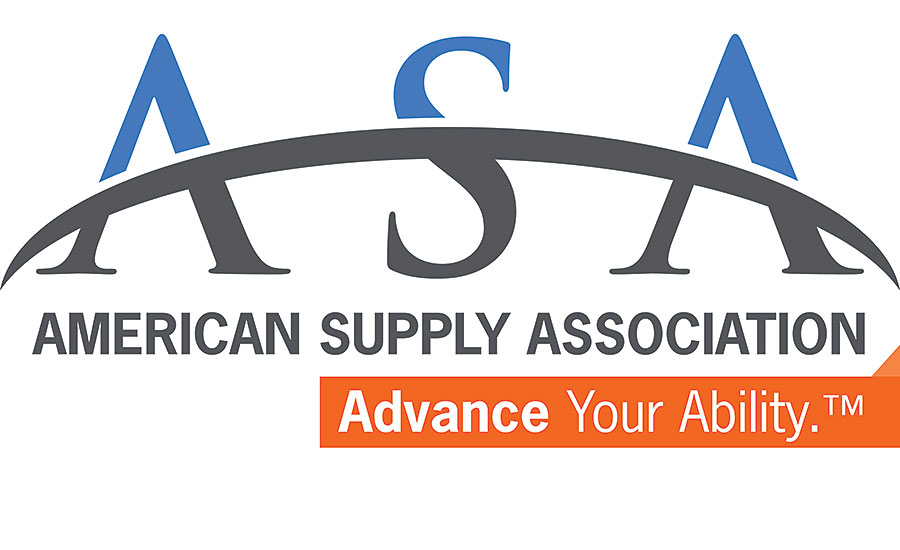ASA Codes and Standards update: Legionella

I had the opportunity to attend an informative conference in Baltimore, Maryland covering Legionella in building water systems. The conference was co-sponsored by NSF International and the National Science Foundation.
The two organizations brought together a highly qualified group of scientists, engineers, healthcare professionals and public health professionals from across the country to discuss the issue of Legionella in our building-water systems.
Before I discuss what I took away from the conference, I thought I would provide a quote from Chris Soderholm of rep firm and ASA member Soderholm & Associates, who also attended the conference.
Soderholm has captured in his quote what I believe to be the critical takeaway from the conference and has raised, in my opinion, an interesting and exciting challenge for our industry:
“This conference left us with a perplexing awareness of this prolific, complex problem and what it means to the P&H community. Our industry is about to experience wide new challenges and opportunities as the consequences of Legionella in building plumbing and mechanical systems are quickly developing as a major public health issue. There are no easy answers, but the knowledge within our industry, along with the products and systems we all design distribute and support are critical elements of the solution.”
Over the three days of presentations and discussions I walked away with three key and very important points:
1) Legionellosis and the overall quality of our building-water systems is a significant public health concern;
2) As our systems become more complex and efficient the potential risk increases; and
3) ASA members need to be aware of the problem and be part of the solution.
We first heard of Legionella back in 1976 when the American Legion opened its annual three-day convention at the Bellevue-Stratford Hotel in Philadelphia. More than 2,000 Legionnaires attended the conference and following the conference there were 149 attendees who became sick and 33 other persons associated with the hotel or in the area who also became sick. Of these total of 182 cases, 29 persons died. Almost a year later, the Legionella bacterium was finally identified and isolated and was found to be breeding in the cooling tower of the hotel’s air conditioning system.
During the conference, several speakers revealed an increase of reported cases of Legionellosis over the last 10 years and some noted the potential connection of the increased number of cases to increased efforts to reduce water use and increase energy efficiency in buildings. Jane Strout, PhD, president and director of Special Pathogens Laboratory, and research associate professor at the University of Pittsburgh Swanson School of Engineering in the Department of Civil and Environmental Engineering, noted there are about 30,000 cases reported per year and that recent studies have shown that 47% of cases are misdiagnosed and not reported. A 2016 CDC Report showed that Legionella in hospitals accounted for 57% of the cases and the hospital cases represented 85% of the deaths. The CDC reported in its 2013-14 Morbidity and Mortality Report (MMR) that there were 42 outbreaks, 1,006 cases, 124 hospitalizations and 13 deaths directly related to Legionellosis. In addition, it was noted there has been a 300% increase in reported cases since 2014.
One of the presenters stated, “We have created a system that favors the growth of this organism.” The relevance of this statement becomes clear when you look at the three key parameters that impact the ability of the Legionella organism to grow – temperature, time and disinfectant residual. As we focus more and more on designing more energy-efficient systems and strive to reduce temperatures in water systems, we provide greater opportunity for growth and as we reduce the water usage in our systems we increase the length of time the water remains in the system thus allowing for growth. It is a “perfect storm” for the increased cases reported.
An important anecdotal statistic that several speakers raised at the meeting and should be noted here is that about 50% of buildings have Legionella in the water system. A question you might ask is where and how does the organism get into the water system. Some of those sources are:
- Directly from ground-water and surface-water sources.
- Inappropriate corrosion control — during the Flint, Michigan water crisis there was a spike in occurrence of Legionellosis infection.
- “Dead ends” or areas of stagnation in water-system piping.
- New or repair construction activities.
- Distribution system pipeline breaks.
- Atmospheric deposition.
Michael Beach, PhD, from the Center for Disease Control, provides the following statistics related to the source of Legionella infections in building systems:
- 65% process failures
- 52% human error
- 35% equipment failure
- 35% unmanaged external disruption
Please note some of the outbreaks may be associated with more than one of the above causes.
Recognizing the increased risk, especially for specific healthcare patients, in June, 2017 the Center for Medicare & Medical Services announced a policy requirement to reduce Legionellosis risk in healthcare facility water systems. An important factor in this policy was a requirement for facilities to create a water-management program and the use of ASHRAE 188, Legionellosis – Risk Management for Building Water Systems. The policy announcement by CMS applies to hospitals, acute-care facilities and long-term care facilities. As you can imagine, this policy has significantly increased the focus on Legionella prevention and designing and maintaining building-water systems that reduce the risk.
What I would like to focus on now is the challenge presented by Chris Soderholm at the beginning of this article related to the role our industry, ASA and ASA members might have in helping to lower the risks.
What I heard throughout the conference was that “it is the system” and not individual products we need to be addressing. Chris Ebener, senior operations engineer at Liquitech, noted, “The end-use device is not usually the actual problem and we need to look at the root cause of where the Legionella is coming from.” In other words, it is the entire system that needs to be addressed. This is good news for our manufacturer members producing plumbing fixtures whose end-use fixtures have sometimes received incorrect blame for the problem.
The Legionella organism and potentially other pathogenic organisms have the ability to grow to an infectious level anywhere in the system if the conditions exist to support growth.
One concern in addressing this issue, in my opinion, is our industry is sometimes segregated by product line, which limits the ability to impact the problem at an overall system level. In addition, trade and professional associations representing the plumbing and PVF industries are segmented with no one association representing the entire supply chain and design/build community. However, the distributor/wholesaler, in many cases, sells all the products that make up the water system (piping, valves, filters, fixtures, pumps, etc.). Does this give us the opportunity to have an impact on public health and provide increased value to our customers? I believe the answer is yes.
ASA is focusing on this issue in several ways:
- Keeping our members informed and hopefully providing opportunities for them to be aware of the issue and help their customers address the issue in the field;
- We continue to support and promote the expenditure of federal funds for improving the aging water-system infrastructure (a source of Legionella);
- Actively participating on the ASHRAE 188 committee providing input on proposed revisions from the perspective of our membership;
- Taking a position, when necessary, to speak against proposed federal, state or local legislation/regulation that would lead to increased water conservation in building-water systems below the current federally mandated requirements; and
- Joining with other plumbing industry associations in pushing for increased research related to the impact of increased water efficiency on building-water systems and the potential increased risk of pathogenic organism growth.
ASA members can have an impact on this important public health issue by learning about the issue and understanding the critical areas related to design, construction and maintenance of a plumbing system that can allow for the growth of Legionella in the water-distribution system and the best practices for lowering the risk. Once ASA members’ staff are knowledgeable in prevention maybe there is an opportunity to reach out to healthcare facilities in your area to determine if there is a way you can assist in their efforts. There also would be opportunity to help your contractor customers and yes, even the homeowners you serve, to better understand how they can decrease risks of contamination of the building/home water systems.
Of course, your expertise and knowledge of water-distribution systems is always needed to assist the ASA Advocacy Team in representing the industry at standards and codes meetings. The more we are engaged in the process, the more we learn about the issue and more importantly, impact the outcome of the standard and codes to protect public health while also being reasonable.
I would like to hear from you on this issue. What other areas could ASA be engaged in related to this issue? What products and services would you like to see ASA develop and deliver to the industry related to this issue? How can ASA assist you in educating your customers on the issue? Please contact me at jkendzel@asa.net – I would enjoy hearing from you.
Looking for a reprint of this article?
From high-res PDFs to custom plaques, order your copy today!









